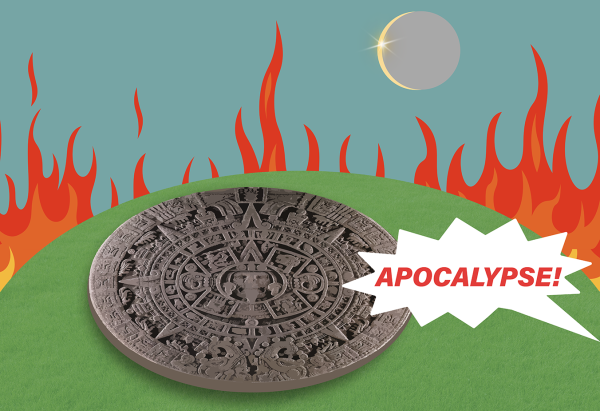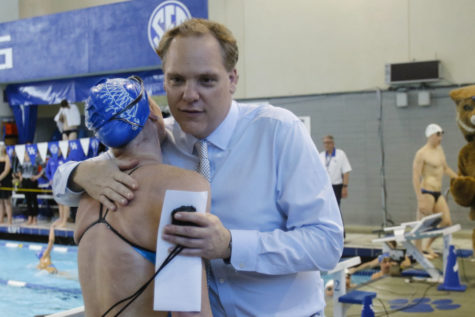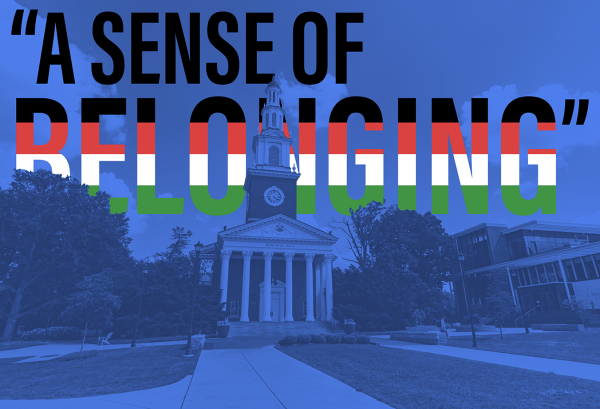The artistry of journalism: Where news and design collide
August 25, 2022
The public attitude toward journalism, especially by journalists themselves, is one of tumult and uncertainty.
According to a June 2022 survey published by the Pew Research Center, 72% of U.S. journalists use a negative word like “struggling” or “chaotic” to describe the news industry. Additionally, 57% are concerned about future restrictions on press freedom, and 71% say made-up news is a big problem for the country.
It’s easy to forget what journalism is actually capable of producing, provided it’s given enough dedication and skill. However, for a reminder, the best place to go is the group that has been awarding excellence in journalism for over 100 years: the Pulitzer Prize Board.
Since 1917, the Pulitzer Prize Board has given awards in various categories of journalism, literature, drama and music. Three of the journalism categories are Feature Writing, Breaking News Photography and Feature Photography, and these categories show best what, in my opinion, journalism was made for: telling human stories in an engaging, easily accessible way.
No discussion about exceptional design in journalism would be complete without mentioning “Snow Fall” by John Branch. This six-part story covers an avalanche at Washington’s Tunnel Creek that took the lives of three skiers, using multimedia tools to expand on details of the story. There are three-dimensional maps that show the size of the mountain, computer generated diagrams that show how an avalanche forms and – possibly most effectively – recordings and videos of the surviving skiers, in which they give their personal recollections of the avalanche.
All of these features are seamlessly integrated with the text and images to hold the reader’s attention and better draw them into the story. Even if you know nothing about skiing or avalanches, by the end of the story, you feel as if you were another participant in this trip.
But let’s face it; sometimes the resources aren’t available to produce something like “Snow Fall.” Sometimes, you only have your words and a few photos to rely on, and “Fatal Distraction” showcases where enough literary talent can take you in journalism.
This story, written by Gene Weingarten of the Washington Post, covers parents who accidentally kill their children by forgetting them in hot cars, and it’s about as heartbreaking as you would expect. However, the writing is so good that I often find myself re-reading it like a favorite book, despite its morbidity. Weingarten’s descriptions grab your attention from the first paragraph, where he describes the trial of one of these parents, Miles Harrison:
“The defendant was an immense man, well over 300 pounds, but in the gravity of his sorrow and shame he seemed larger still. He hunched forward in the sturdy wooden armchair that barely contained him, sobbing softly into tissue after tissue, a leg bouncing nervously under the table … When a hospital emergency room nurse described how the defendant had behaved after the police first brought him in, she wept … What he said was that he didn’t want any sedation, that he didn’t deserve a respite from pain, that he wanted to feel it all, and then to die.”
It’s definitely not something you’d expect to see on the local news, but it just goes to show the immense potential of journalism. Describing events and social issues does not always have to start with short sentences and simple information, especially with long features like this. It can build up and be creative, almost literary.
Of course, we must not forget about photography. From framing to cropping to captioning, there is an art involved in capturing the visual aspects of a story, and the two separate photography categories of the Pulitzers definitely prove that.
My favorite photography prize winners are the ones with only one photo. The fewer photos you have, the less opportunity you have to cover widespread emotion and the complex impacts of an event or issue. Still, “The Human Cost of COVID-19” does that in spades.
The photo, taken by freelance photographer Joshua Irwandi for National Geographic, shows the aftermath of a COVID-19 fatality. There are no doctors, no family, just a faceless plastic-wrapped body in a solitary Indonesian hospital room.
The photo blends the sterile and domestic, the horrifying with the peaceful. You can easily imagine this person looking at the night sky coming in through their window, watching the TV in their hospital room, trying to make the best out of a bad situation. Before the three layers of plastic, the disinfection rituals repeated nine times, they were a human being. Now, though, they’re just a contaminated corpse, a statistic, not even allowed to let anyone see their face after their death. You realize that this pandemic has stripped them of their humanity.
Then you realize that this could have been you. Then you realize that you’ve already been stripped of your humanity. If you were labeled as an “essential worker” at the beginning of the pandemic, before vaccines were widely available and the efficacy safety measures were always contested, you realize you’ve always been expendable. The media may thank you, but if the coronavirus took you, too, you still would have been a percentage on a dashboard.
It’s no wonder that in recent years, people have trusted the media less and less. Gallup named 2021 as the second lowest year on record for Americans’ trust in the media. With discussions of bias, corporate influence and dishonesty in journalism so prevalent in recent years as well, it’s easy to see why.
However, we must remember that journalism still has potential. If writers and editors continue to follow the journalistic code of ethics that has been established for decades, they will be able to leverage their own creativity and produce some truly incredible storytelling that presents the human experience in a way no other industry can.



















































































































































